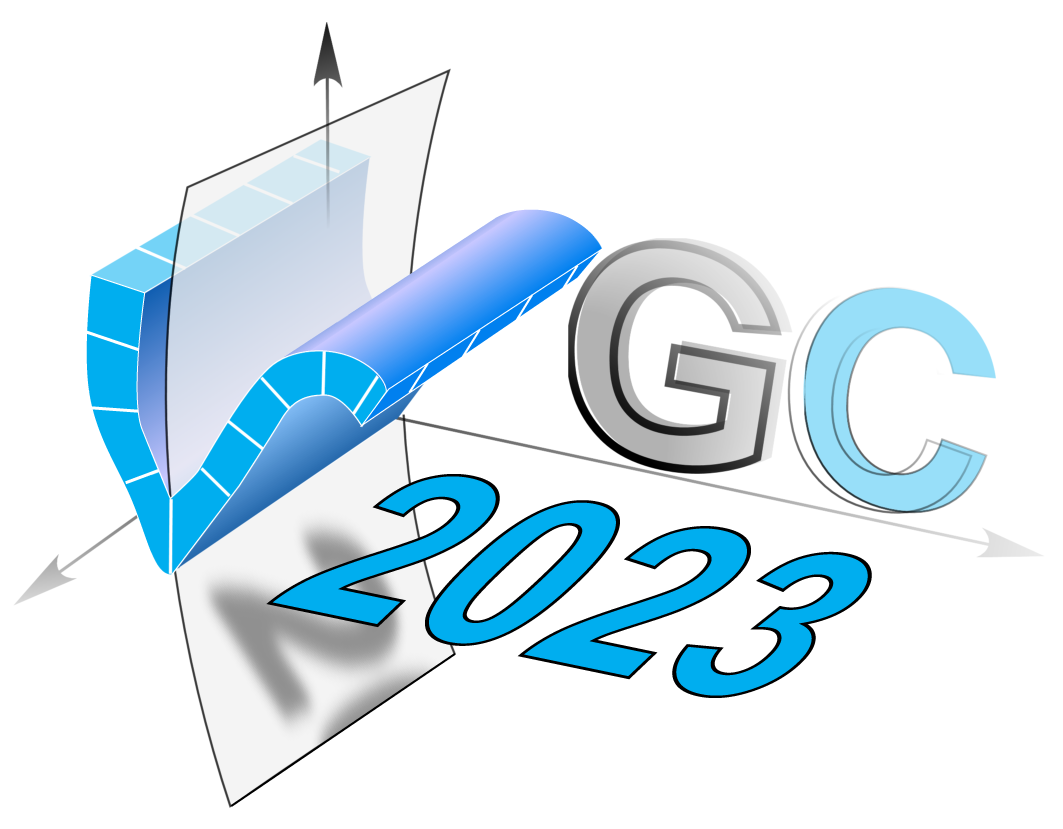Scientific Program
VGC 2023 – Unveiling the dynamic Earth with geomatics
The VGC series focuses on novel developments and applications of close range remote sensing methods within the broad field of geoscience research.
The VGC 2023 opens up new application fields. Geoscientists share key issues in the use of remote sensing approaches for studying the enviroment at different scales and its evolution through time. For these scientific fields, acquiring and working with 2D or 3D (even 4D) data has never been so accessible.
The VGC series aims to bring together several scientific disciplines sharing the developments of advanced techniques for working with lidar or photogrammetric data. Mapping structures or phenomena from numerical high-resolution topographic data cuts across various scientific domains (e.g., geomatics, computer science, visualization, geostatistics and geomodelling) and various sub-disciplines of Earth and Space Science.
Advanced visualization techniques (e.g., Virtual, Augmented or Mixed Reality) or other sensorial techniques (e.g., sonification) also offer new possibilities for teaching our discipline to students, for communicating or for increasing awareness among the general public of scientific issues.
Thus, whatever your application field or your sector (academic, public or private), we encourage you to submit to VGC 2023 so that exchanges and cooperation across the boundaries of disciplines are promoted and lead to novel integrated scientific approaches for acquiring, analyzing and interpreting topographic data as well as for modelling the targeted structures and phenomena from these data sources.
Themes
The non-exhaustive list of VGC 2023 scientific themes is divided as follows:
1.Method developments
Focuses on innovations in acquisition and processing of 3D datasets, new sensors, devices and platforms, and integration of different techniques. This revolves around technology development (hardware and software).
-
- Laser scanning (lidar) & novel 3D mapping sensors
- Photogrammetry/structure from motion (SfM)
- Sensor fusion and integration (e.g., multi/hyperspectral, radar, thermal)
- Novel platforms (e.g., smartphones)
- UAV data acquisitions and processing
- Mobile & real-time computing
- Augmented reality in fieldwork/teaching
- Subsea & subsurface (karst, tunnels) acquisitions
- Autonomous systems and smart sensors
- Laboratory-scale measurement (e.g., fossils, plaster, sediment tanks)
2. Data Analysis and Geomodelling
Taking the processed 2D, 3D or 4D datasets and using them as the basis for analysis. Modelling or simulating targeted structures or phenomena. Uncertainty and risk analysis.
-
- Interpretation
- Automated feature mapping
- Geostatistics + Uncertainties
- Numerical modelling and simulation
- Visualisation, computer graphics
- Virtual reality
- Change detection/monitoring
- AI applications (e.g. Machine Learning, Neural Networks)
3. Application Fields
Showcase the major influence of spatial data across the geosciences, combining acquisition, processing and analysis to solve problems and answer outstanding questions.
-
- Sedimentology (e.g., facies mapping, geobody modelling)
- Structural geology (e.g., fracture/fault mapping, network modelling)
- Geomorphology (e.g., characterisation of earth surface processes)
- Natural hazards (e.g., rockfalls, landslides, coastal erosion, soil erosion)
- Glaciology/cryosphere (e.g., glacier front monitoring)
- Forest sciences (e.g., vegetation structure, species classification)
- Landscape ecology (e.g., biodiversity mapping, wildfire impact mapping)
- Climate/environment
- Teaching/general public awareness
- Infrastructure (e.g., tunnelling, railway, roads)
- Mining and energy (e.g., geothermic or petroleum exploitation)
- Volcanology: (e.g., lava flow mapping, crater modelling, laboratory methods)
- Hydraulics/through-water mapping and hydrometry (e.g., bathymetry, camera gauge)
